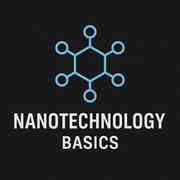Professional Courses
Industry-relevant training in Business, Technology, and Design
Categories
Interactive Games
Fun games to boost memory, math, typing, and English skills
Typing
Memory
Math
English Adventures
Knowledge

Nanotechnology Basic
This beginner-friendly course introduces the fundamentals of nanotechnology and nanoscale science. Students will explore the unique properties of nanomaterials, learn about synthesis and characterization techniques, and understand how nanotechnology is applied in fields like medicine, electronics, energy, and the environment. The course also covers key topics such as nanomechanics, nanophotonics, fabrication methods, ethical concerns, and future trends. Ideal for students and professionals, it provides a strong foundation for further study or careers in the nanotech field.
Course Chapters
Chapter 1: Introduction to Nanotechnology
Nanotechnology encompasses the science and engineering of materials with dimensions on the nanoscale, exhibiting unique properties that enable innovative applications across various fields. Its development has been marked by significant milestones and interdisciplinary collaboration, making it a dynamic area of research. Global initiatives and dedicated research centers continue to drive advancements in this field, underscoring its transformative potential in technology and society.
Chapter 2: The Nanoscale World
The nanoscale world, which ranges from approximately 1 to 100 nanometers, is characterized by unique properties and behaviors that differ significantly from bulk materials. Key factors include a high surface area to volume ratio, quantum effects, and varying reactivity and stability, which lead to innovative applications in technology and medicine. Understanding these factors is crucial for leveraging nanomaterials' potential.
Chapter 3: Classification and Properties of Nanomaterials
Nanomaterials are classified by their dimensional characteristics and origins, distinguishing between natural and engineered variations. Their properties, including physical, chemical, electrical, optical, and magnetic characteristics, are significantly affected by their size and shape, leading to diverse applications in technology and medicine.
Chapter 4: Synthesis of Nanomaterials
Nanomaterials can be synthesized using top-down and bottom-up approaches, each with its own advantages and limitations. Common synthesis techniques include ball milling, lithography, sol-gel methods, and chemical vapor deposition, alongside biological and green synthesis methods. The choice of synthesis method is influenced by material type, desired properties, scalability, cost, and environmental considerations.
Chapter 5: Characterization Techniques for Nanomaterials
Characterization techniques are vital in the field of nanotechnology, offering essential insights into the structural and surface properties of nanomaterials through various microscopy and spectroscopy methods. Surface area and porosity analysis further enhance understanding of nanomaterial behavior and applications. Case studies illustrate the practical application of these techniques in interpreting characterization data.
Chapter 6: Nanomechanics and Nanophotonics
The chapter delves into nanomechanics and nanophotonics, focusing on the unique mechanical properties of materials at the nanoscale, such as enhanced elasticity and hardness, as well as sophisticated light-matter interactions. It discusses principles of plasmonics, quantum dots, and photonic crystals, highlighting their applications in various technologies across industries. Understanding these concepts is essential for appreciating how nanoscale mechanics and optics influence modern advancements.
Chapter 7: Fabrication and Nanolithography Techniques
Nanolithography is essential in creating precise nanostructures for various applications including electronics and biomedical fields. The chapter covers multiple lithography techniques such as photolithography, electron-beam lithography, nanoimprint lithography, and dip-pen nanolithography, highlighting their principles, advantages, and limitations. Key challenges like resolution limitations and material compatibility are also discussed, emphasizing the ongoing need for innovation in the field.
Chapter 8: Applications of Nanotechnology
Nanotechnology has transformative applications in various fields including medicine, electronics, energy, and the environment. It enhances the effectiveness of treatment methods, miniaturizes electronic components for improved efficiency, and offers sustainable solutions to pressing environmental issues. The interplay of nanoscale materials also fosters innovation in energy generation and storage, leading towards a greener future.
Chapter 9: Computational Nanotechnology and Modeling
Computational nanotechnology utilizes mathematical models and algorithms to simulate nanoscale systems, enabling insights into the behavior of atoms and molecules. Key methods include Molecular Dynamics, Monte Carlo simulations, and Density Functional Theory, all enhanced by machine learning, which streamlines data analysis and material discovery. Various software tools support these techniques, making computational nanotechnology essential for advancements in material science and device design.
Chapter 10: Safety, Ethics, and Environmental Impact
Understanding the toxicological effects of nanomaterials and their behavior within biological systems is critical for ensuring public health and safety. The chapter discusses the regulatory frameworks governing nanotechnology, ethical implications associated with its use, and emphasizes the importance of public awareness and communication in the advancement of nano-science and technology.
Chapter 11: Future Trends and Career Opportunities in Nanotechnology
The chapter addresses future trends in nanotechnology, highlighting the significance of nanorobotics and the integration with emerging technologies such as AI and quantum computing. It details various career paths in the nanotech sector and discusses entrepreneurial opportunities within the industry, emphasizing the sector's continuous expansion across multiple fields.
